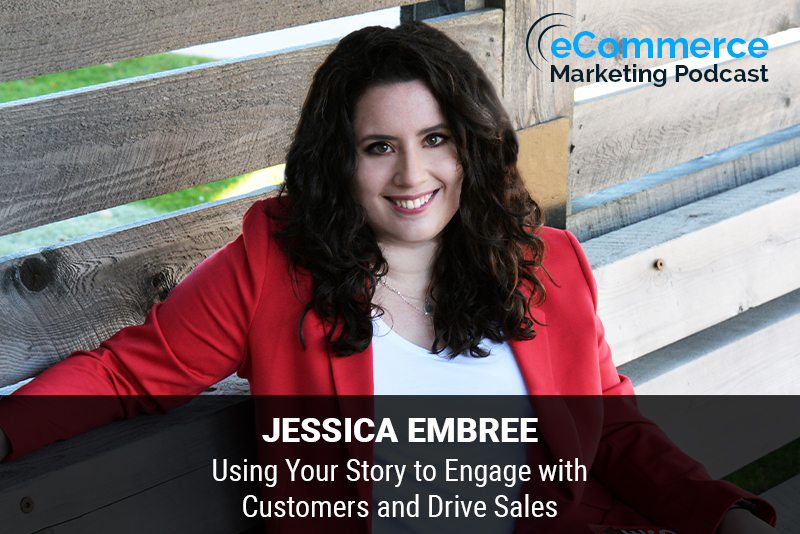
The eCommerce Marketing Podcast walks you through everything that goes into ecommerce marketing — from inbound marketing to paid advertising to conversions. Learn the strategies top marketing experts use to grow their businesses.
Jessica Embreeis an international bestseller, StoryBrand Guide, and marketing specialist. She specializes in helping businesses grow all over North America with clear and impactful marketing campaigns.
In this episode, you will learn
- What exactly is StoryBrand
- How do ecommerce businesses use the StoryBrand method to craft the right messaging that will connect with more customers and increase sales
- What are some general rules of thumb when it comes to putting together your brand’s story
- Examples of ecommerce businesses that have created a captivating brand story to increase conversions
For show transcript and past guests, please visit https://www.ecommercemarketingpodcast.com
Or on YouTube at:
https://www.youtube.com/channel/UC3PgT0NOGzpdPGQtBK0XLIQ
Follow Arlen:
Twitter: https://twitter.com/askarlen
Facebook: https://www.facebook.com/arlen.robinson.7
Instagram: https://www.instagram.com/arlenyohance/
LinkedIn: https://www.linkedin.com/in/arlenrobinson/
Past guests on the ecommerce marketing podcast include Neil Patel, Nemo Chu, Luke Lintz, Luke Carthy, Amber Armstrong, Kris Ruby and many more.
Thanks for listening. Be sure to subscribe and leave a review.

In this episode of the E-Commerce Marketing Podcast, host Arlen Robinson interviews Jessica Embree, an international bestseller, StoryBrand Guide, and marketing specialist. Jessica shares insights on using the StoryBrand framework to craft clear and impactful marketing messages that improve conversions for e-commerce businesses.
Key Takeaways:
- Introduction to Jessica Embree (00:00:56)
- Jessica’s background as a StoryBrand Guide and her journey from a young entrepreneur to a marketing specialist.
- What is StoryBrand? (00:03:45)
- Explanation of the StoryBrand framework by Donald Miller and its seven-part process for creating clear messaging.
- Applying StoryBrand to E-commerce (00:05:22)
- Importance of clear customer journeys and categorizing products for ease of navigation on e-commerce sites.
- The Grunt Test (00:07:59)
- The necessity of capturing attention within three to five seconds on the homepage by clearly stating what you do, how you help, and the next step.
- Avoiding the Curse of Knowledge (00:09:18)
- Ensuring messaging is free of jargon and understandable to all customers.
- Effective Calls to Action (00:11:06)
- Creating direct and purposeful calls to action that guide customers to the next step without ambiguity.
- Crafting Authentic Brand Stories (00:14:01)
- The importance of being authentic and transparent in your brand’s story to build trust and connection with customers.
- Customer Journey and Nurture Campaigns (00:18:16)
- Keeping the customer journey concise and using nurture campaigns to retain customers through valuable content and offers.
- Success Stories with StoryBrand (00:22:27)
- Examples of e-commerce businesses that have successfully implemented StoryBrand, resulting in significant increases in conversions.
Guest Information:
Jessica Embree
- Creative Director at Tulip Media Group
- Website: Tulip Media Group











